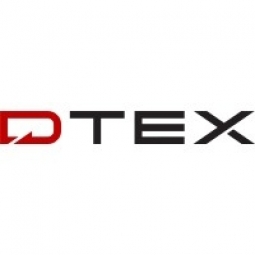Customer Company Size
Large Corporate
Product
- DTEX Workforce Cyber Intelligence Platform
Tech Stack
- Cybersecurity
- Phishing Detection
- User Behavior Analysis
Implementation Scale
- Enterprise-wide Deployment
Technology Category
- Cybersecurity & Privacy - Network Security
Applicable Functions
- Business Operation
Use Cases
- Cybersecurity
Services
- Cybersecurity Services
About The Customer
The customer is a large energy organization with 3,000 employees. The company was the victim of a phishing attack, which occurred due to the failure of perimeter security. The phishing emails managed to penetrate the company's network defense system and landed straight into employee inboxes. A proxy service eventually detected and flagged that users had visited malicious URLs, but there was limited visibility into where and how the attackers entered the network, the number of users affected, and the extent of the potential damage.
The Challenge
The enterprise security threat landscape is more complex than ever, with new risks and attack methods emerging faster than we can keep up with them. One established attack vector that shows no signs of slowing down is phishing. As phishing attacks have become more sophisticated, they're increasingly focused on exploiting a key, but often overlooked, vulnerability: the users inside of your network. It is user behavior - the opening, the clicking, the downloading - that serves as the enabler, allowing malicious actors to gain entry to your network and find the valuable personal or company information they're seeking. Recently, a slew of invoice-themed malicious phishing emails was found to have penetrated a customer network - past a tried-and-true network defense system and straight into employee inboxes. A proxy service eventually detected and flagged that users had visited malicious URLs, but there was limited visibility into where and how the attackers entered the network, the number of users affected, and the extent of the potential damage.
The Solution
DTEX's Workforce Cyber Intelligence Platform was used to provide critical insights and answer important questions enabling the security team to fully understand the origin and trajectory of the attack, and pinpoint affected users and endpoints. The platform was able to uncover evidence of advanced techniques commonly leveraged to avoid detection and successfully infiltrate employee inboxes. One such technique was the use of polymorphism, including dynamic email subject lines, URLs, document names, and executed payloads. Additionally, the links contained within the phishing emails were found to be addresses of actual company sites that had been compromised and used as transient locations to host malicious documents. DTEX's platform was able to provide answers to critical questions such as which users opened the malicious email, which users clicked on the malicious link or downloaded the attachment, when did the malicious email enter the organization, and which endpoints are potentially compromised.
Operational Impact

Case Study missing?
Start adding your own!
Register with your work email and create a new case study profile for your business.
Related Case Studies.

Case Study
Enel Secures Italian Power Generation Network
Electric energy operators around the world are working to increase the reliability and cyber resiliency of their systems. This includes Enel, a global power company that manages and monitors the Italian power grid. This grid:• Serves 31 million customers• Has a net installed energy capacity exceeding 31 gigawatts• Includes more than 500 power generation plants,including hydroelectric, thermoelectric, and wind• Is managed and monitored by Enel 24/7/365• Is operated by Terna, the Italian Transmission System Operator (TSO)Enel is responsible for the availability of the grid’s underlying ICS and industrial network. It also manages Regional Control Centers and Interconnection Centers which connect with the TSO. The TSO manages the flow of energy to the grid plus controls and remotely regulates the power generation of power plants, increasing and decreasing power production as required. The complex system of interaction and cooperation between Enel and the TSO has strong security implications as well as operational and business challenges.

Case Study
Securing the Connected Car Ecosystem
In-vehicle communications and entertainment system hosts high-value or sensitive applications. API libraries facilitate communication and sharing of vehicle data. These API libraries are vulnerable to reverse engineering and tampering attacks and may even result in loss of passenger safety. Attackers can inject malware that may be able to migrate to other in-car networks such as the controller-area-network (CAN) bus which links to the vehicle’s critical systems. Software provided for dealers to interface with cars through the OBD2 port is vulnerable to reverse engineering and tampering attacks. Hackers may be able to abuse these tools to inject malicious code into the ECUs and CAN bus. Attackers can lift the cryptographic keys used, and use that to build their own rogue apps/software. Their cloned version of the original app/software may have altered functionality, and may intend to gain access to other in-car networks.

Case Study
Secure and Cloud-based Data Marketplace
The great promise of new connected concepts of industry like 'Industry 4.0' is their ability to deliver a historically unparalleled level of responsiveness and flexibility. While modern supply chains are already heavily integrated and designed to be fluid and fast moving, a large swathe of manufacturing still remains beholden to economies of scale, large production runs, and careful preplanning.The Industrial Internet of Things (IIoT) is set to change this by allowing small-batch or even custom manufacturing on a truly industrial scale. With machines whose functions are not set in stone, but flexible and determined by their operating software and with a new form of connectivity bringing industrial engineers, product manufacturers, and end users closer together than ever before. Ad-hoc adjustments to automotive parts, for example, during active product runs or the bespoke manufacturing of custom sneakers become very viable options indeed.Much of this remains a theoretical vision, but IUNO, the German national reference project for IT security in Industry 4.0 demonstrates the new capabilities in action with a secure technology data marketplace running a smart drinks mixer.

Case Study
Expedia Hosted by 2lemetry Through AWS
Expedia is committed to continuous innovation, technology, and platform improvements to create a great experience for its customers. The Expedia Worldwide Engineering (EWE) organization supports all websites under the Expedia brand. Expedia began using Amazon Web Services (AWS) in 2010 to launch Expedia Suggest Service (ESS), a typeahead suggestion service that helps customers enter travel, search, and location information correctly. According to the company’s metrics, an error page is the main reason for site abandonment. Expedia wanted global users to find what they were looking for quickly and without errors. At the time, Expedia operated all its services from data centers in Chandler, AZ. The engineering team realized that they had to run ESS in locations physically close to customers to enable a quick and responsive service with minimal network latency.
.png)
Case Study
OTA Software Updates for Smart Energy (gridX)
gridX has a requirement for over-the-air software updates for their gridBox devices and used the Yocto Project for their builds. The driver for the requirement was having the ability to quickly support new features, as well as deploying bug fixed and path known security vulnerabilities. New software updates with a US stick manually to all gridBox devices in the field would be prohibitively expensive and labor-intensive.

Case Study
Transformed IT Infrastructure Improves Business Agility
A global security, storage, and systems management software provider planned to demerge into two separate companies. To prepare, it undertook a major overhaul of its IT infrastructure and operations strategy. A key requirement: streamlining the Hosting Group, which handled compute, storage, and middleware operations. These functions had grown complex and had a wide geographic distribution. The company planned to bring them under closer in-house management.The company looked to increase its business agility so it could quickly and creatively respond to customer demands with improved internal collaboration and optimized go-to- market and IT service delivery capabilities. Modernizing IT functions, and making them more responsive, was critical to achieving these goals.







